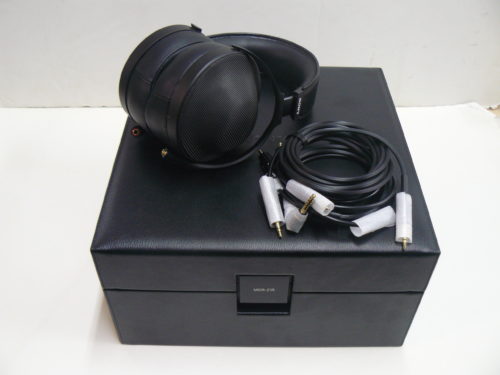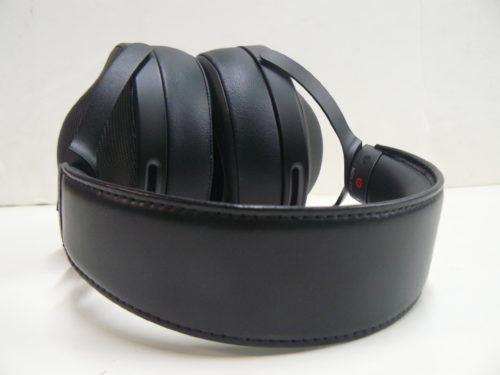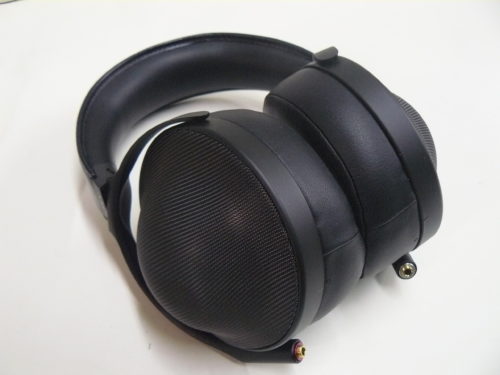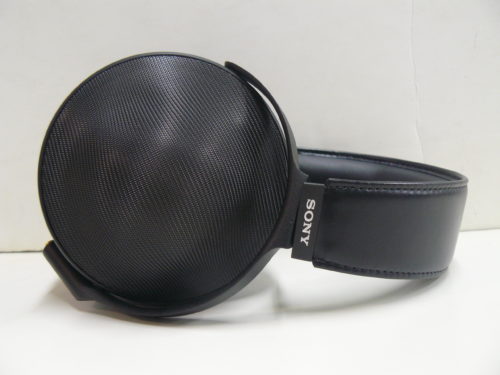There are only a few major audiophile headphones that have managed to escape me over the years, and the Sony MDR-Z1R is one of them. This is Sony’s top dog when it comes to their audiophile selection, and is also one of the most sought-after closed-back headphones on the market. I’ve heard a lot about the Z1R over the years, and now I can finally dive deep into what makes it so talked about.
What You Get
- MDR-Z1r headphones
- Hard case for storage
-
0.17″ balanced connection cable
-
3.5mm headphone cable
Look and Feel
The Z1R has a sort of funny design. The material on the headphones is two big earcups is clean and unique, and it also bulges outward. You’d think by the size that the Z1R would be a lot more weighty, but they actually have a lightweight feel to them. The earpads and headband material are also very soft and comfortable, being made from sheepskin and prioritizing a non-fatiguing fit after numerous listening hours. I thought the Z1R had great isolation and my ears still had enough room to breathe and avoided getting hot.
Design
One of the Z1R’s main staples is its huge 70mm dome dynamic driver with a CCAW voice coil. This promises an output with a wide dynamic range and a more sizable signal flow. It’s improved by the Z1R’s resonance-free housing which uses special filters to control air resistance and eliminates destructive noise caused by driver movement.
Soundstage
A closed-back headphone in this price range can still have its limitations, but the MDR-Z1R makes the best of those limitations to reproduce an excellent soundstage. There’s a roomy, feeling to the Z1R that keeps its imaging in a more noticeable box of sound, but its extension is far wider and gives the music a ton of space to propagate. Its layering goes deep into the void and even extends its height for a grander sense of scale. Scale is actually what the Z1R does better than a lot of other closed-backs, as it delivers its stereo image with a sense of fullness. All of the sound elements feel like they’re happening within you and in front of you at the same time. It doesn’t necessarily extend outward or wraps around you, but the sonic environment is able to replicate the energy of a track to a fine degree. Even with its more limited space, the Z1R does a fantastic job communicating both scale and realism.
Low End
The bass is the main course of the Z1R, giving you a rich timbre that is hard to beat. They may not move with any kind of swiftness, but the texture of the frequencies is consistent and buttery smooth for a constantly engaging listen. It’s hard not to be enamored by this bass response, as it not only gives you that fun coloration, but also a refined sense of clarity, with a clean tonality and excellent depth. The sub-bass also helps exponentially with the sound signature, providing a pool of vibrating tones for easy excitement, while the mid-bass operates more articulately with its warmth. Sometimes it can feel like the headphone has a rumble pack, especially when I added a bass boost using the Z1R with the hip-dac 2. This brought the lows to a whole new level, playing up the headphone’s more theatrical qualities.
Mids
Even though the powerful low-end isn’t destructive to anything in the midrange, there’s still some hollowness that exists here. For all of the fullness and richness that the Z1R possesses, some fundamental midrange frequencies seem to get left behind. Musically there’s still some enjoyment to the mids, especially the low-mids and mid-treble ranges of frequency. However, it just feels like too much fidelity is scooped out of the frequency response to give the sound signature that extra pop. Vocals work the most out of any other instrument that the Z1R can reproduce, as even though they’re a little too much in the background, they still resonate with height, appear clear over other layers of instruments.
Highs
Although you get a bit of extension in the upper mids, the highs don’t really shine until the sound gets way up in the treble. You don’t get a hollowness like in the mids, but the highs feel like they smooth out until they reach a certain point. After that the timbre becomes very pleasing, performing fine details with a touch of spark for satisfyingly crisp response. This gives instrumentals a colorful release to their tonality, highlighting areas of the timbre than bringing a layer of shine to the sound signature. It lacks some significant air, but the presence is still well communicated, offering a more considerable bite to elements like strings and pianos.
Summary
I definitely thought that the Z1R was everything that it was cracked up to be. The midrange left me a bit disappointed but the bass and highs pretty much save the day in terms of resolution. It all culminates in a sound that reproduces an impactful and dynamic presence that’s a lot of fun, and it will keep you coming back to it for years to come.
| Pros | Cons |
|
|
The Sony MDR-Z1R is available at Audio46.
MAJORHIFI may receive commissions from retail offers.












